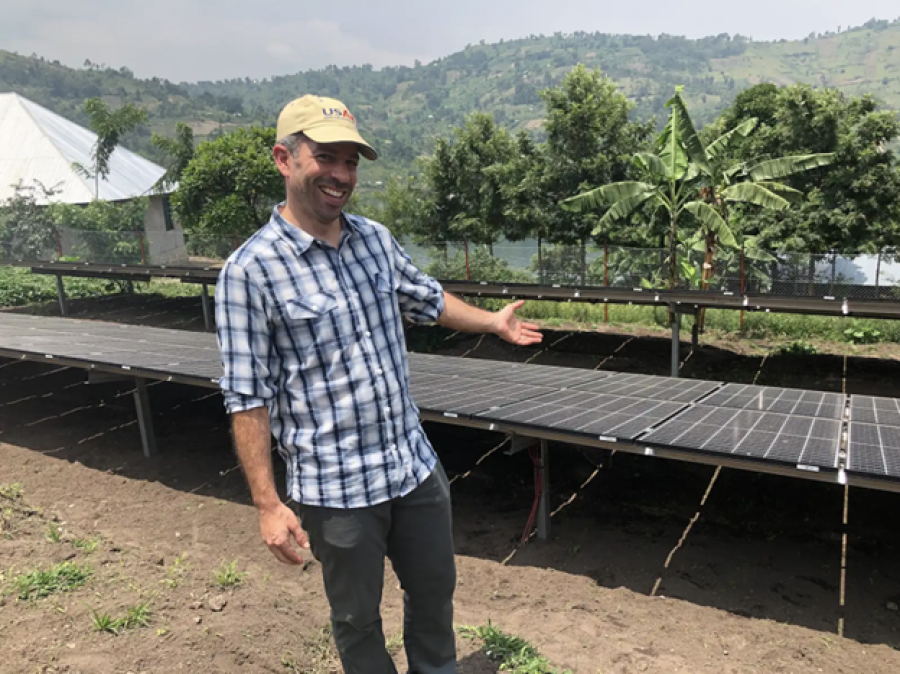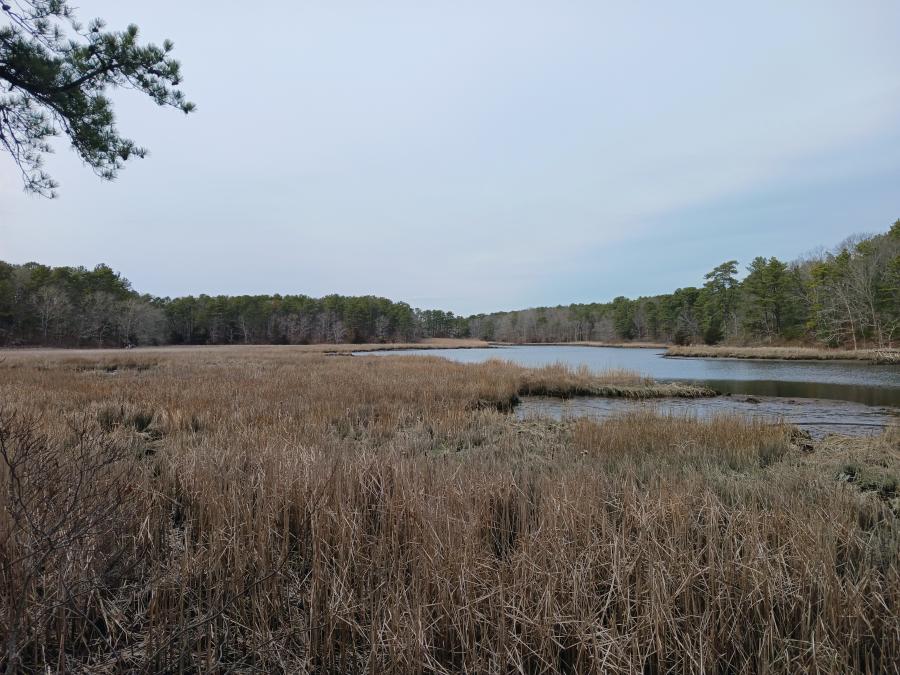How many people lived in this hemisphere at the time Columbus encountered it, to his surprise, 500 years ago? Many Europeans answered, "None to speak of," even after learning about - and then vandalizing - the Aztec and Inca empires. Whether rich or poor, rural or urban, these non-Christians had no "souls," said the invaders, and therefore "did not count."
Such preposterous thinking lives on, for we all recall textbooks explaining how christopher Columbus "discovered" an "empty wilderness." These texts often included maps of the "peopling" or "settling" of this supposedly "virgin" land. They showed a small parade of colored dots, representing European immigrants, moving westward across an otherwise blank continent. The Americans who already lived here have remained all but invisible to later generations.
This obvious blindness and distortion had a pragmatic purpose, for if indigenous people did not show up on the map, how could there be any serious discussion of their territorial, political, and cultural rights? After all, to inhabit and use an empty house might be deemed laudable, but to forcibly preempt an occupied dwelling could be called an invasion.
If avoiding conscious thoughts of trespass was one reason for generations of Europeans to play down Indian numbers, ignorance of epidemic disease was another. In the century since the Columbian Quadricentennial of 1892, we have come to understand that foreign diseases - smallpox, measles, plague - decimated Native American cultures, and that much of the worst devastation occurred in the earliest years of contact, when previously unexposed populations lacked acquired immunities and were especially vulnerable.
Scholars still remain unclear about the number of Native Americans alive in 1492, but most agree the figure is substantially higher - perhaps as much as 10 times higher - than estimates accepted 100 years ago. In North America alone, there may have been over 7 million indigenous people. Their numbers dropped sharply in the century that followed and continued to plummet during the seventeenth century, as English colonization began. By the 1680s, when the Spanish, French, and English were all actively engaged in a struggle for imperial control of the continent and its resources, the archival record finally becomes strong enough to suggest the extent of the dramatic shifts in population that were under way.
Consider the American South, for example, where a dramatic demographic transition can be documented in the century before the creation of the United States. Several years ago, I divided the entire U.S. Southeast below the Ohio River, from Virginia to East Texas, into 10 subregions and sought out contemporary estimates for the red, white, and black populations of each area at 15-year intervals from 1685 to 1790. A grid of these numbers over time made it possible to spot and discard estimates that clearly represented colonial distortions or later copying errors. By weighing fragmentary data from commercial, military, and religious sources, surprisingly complete estimates, with perhaps a 10 percent margin of error, were obtained for the three groups in all 10 Southern subregions over this crucial century.
The startling results can be seen even in a greatly reduced summary (see table on page 59). Who lived in the American South in 1685, more than a century after the founding of Spanish St. Augustine and nearly three generations after the beginnings of English Jamestown? Of roughly 250,000 inhabitants in the thinly populated expanse, fewer than 50,000 were not Indians. And almost all these European and Africans resided near the Atlantic coast in Virginia and the new colony of Carolina. Throughout the rest of the South, 99 of every 100 people were Native American.
Forty-five years later the situation was dramatically different. The South's overall population had risen above 290,000, and nearly half was white. Most whites and blacks still resided in tidewater Virignia and the two Carolinas; elsewhere almost nine of ten inhabitants were Indians. However, more than a generation of warfare, enslavement, and epidemics had reduced the South's Native American population by two-thirds. (It is this sort of devastating decline, repeated at other times and in other parts of the continent, that suggests the word "holocaust" for describing the Indian experience in the colonial era.)
Two generations later, by the time of the first U.S. Census in 1790, the demographic profile of the greater South had again changed drastically. Slow growth had given way to explosive expansion, with roughly 1,686,000 people living between Chesapeake Bay and Galveston Bay. The Indian population had continued to decline, although much more slowly. But the non-Indian population, boosted by arrivals from Europe and the brutal African slave trade, had grown faster than ever, and migrations across the Appalachians into Kentucky and Tennessee after the Revolution suddenly threatened the villages and hunting grounds of the Chickasaw, Cherokee, Shawnee, and other interior tribes.
DESIGNATED HOMELANDS
The creation of the United States initiated a new era in relations between Indian and non-Indian Americans, not only in the South but elsewhere as well. "You call yourselves free and independent," an Iroquois leader from western New York told a member of President Washington's administration. "We as the ancient inhabitants of the country and sovereigns of the soil say that we are equally free as you or any nation under the sun."
It had been 300 years since the appearance of Columbus, but from a continental perspective Europeans had made only nominal inroads into North America. French and English had penetrated the valleys of the St. Lawrence, the Mississippi, and the many shorter rivers east of the Appalachian Mountains, conquering, expelling, or surrounding the local residents. The Spanish had established communities in the southwest and a small string of missions up the California coast as far as San Francisco. English contact with Hawaii had just begun, as had the Russian colonization of Alaska.
For the most part, newcomers from Europe and Africa hovered near the coasts. True, their presence was already felt throughout the continent: Plains Indians had adapted Spanish horses, foreign trade goods had reached interior village, and novel diseases had ravaged countless Native American communities. Yet most of the land of the future continental United States remained in the hands of indigenous people (see map 1), as a series of maps by historian Paul Prucha illustrates.
In the first 25 years after the end of the Revolutionary War, aggressive speculators in the young republic thrust west across the Appalachians, as state and federal governments laid claim to valuable land. The vast Ohio River Valley, which Pontiac had hoped to consolidate into a secure Indian domain in the 1760s, fell to the burgeoning white population after the military defeat of another would be consolidator, the great Shawnee leader Tecumseh, in 1813 (see map 2). During the 1820s and '30s, the U.S. government consolidated its policy of forcing major eastern tribes to move to designated homelands west of the Mississippi (see maps 3 and 4). The Choctaws and Chickasaws were obliged to move from Mississippi to Oklahoma, the Creeks were expelled from Alabama, and the Cherokees were marched west along the "trail of tears" from North Carolina and Georgia.
A remnant of each group did remain in the east. The Seminoles of Florida, led by Osceola, offered armed resistance and forced the U.S. government to expend $20 million and lose 1,500 men in its struggle to deport 3,000 members of their tribe to Oklahoma. Others remained in Florida, having fought the U.S. Army to a standstill. Even during the 1840s, when the expansionist United States acquire much of the Southwest from Spain and most of the Pacific Northwest from Great Britain through war and threat of war, most Western land remained in the control of independent Indian groups, whatever the claims of distant powers.
The discovery of gold in California in 1849, however, brought a rush of 80,000 Americans to the area, and within a year California had been granted statehood. Enormous land cessions followed swiftly, as settlers continued to pour west along the Oregon Trail (see map 5).
Though the outbreak of the Civil War briefly reduced the expansionist pressure, the war's end meant intensified migration. If any Civil War veterans heading west were sensitive to Native American needs, as suggested recently by the film Dances With wolves, they were surely the exception rather than the rule. The war had removed slavery as an issue hindering expansion. It had also trained thousands of soldiers and officers whose next wars would be fought against Indians - Comanches, Cheyennes, Sioux, Modocs, Nex Perces, Utes, Apaches. And the conflict had underscored the importance of railroads in consolidating a continental empire less than 100 years after the successful rebellion of the 13 British colonies. Using Chinese labor and Native American land, the Central Pacific Railroad linked California to the East in 1869. From the Rio Grande to Canada, Western land cessions far exceeded the previous decade, even without considering the acquisition by the United States of Alaska from the Russians in 1867 (see map 6).
MYTH OF THE VANISHING REDMEN
In 1877 the Sioux leader Sitting Bull summarized the ongoing conquest of Native American land by an alien system. "We yield to our neighbors, even our animal neighbors, the same right as ourselves, to inhabit this land," he told a council meeting at Powder River. "Yet, hear me, people, we have now to deal with another race - small and feeble when our fathers first met them but now great and overbearing.... Possession is a disease with them. These people have made many rules that the rich may break but the poor may not.... They claim this mother of ours, the earth, for their own and fence their neighbors away; they deface her with their buildings.... That nation is like a spring freshet that overruns its banks and destroys all who are in its path. We cannot dwell side by side."
By the end of the nineteenth century, the land base of Native Americans within the continental United States had been virtually destroyed (see map 7). Several dozen tiny and isolated reservations persisted in the East and remain to the present day. In Oklahoma, once designated Indian Territory, federal law has allowed the large native holdings to be steadily reduced since the first discovery of oil reserves. It is no coincidence that most land reserved to Native Americans in the lower 48 states (including the Navajo Reservation of 24,000 square miles - the size of West Virginia) falls in the arid region between the crest of the Rockies and the Central Plains, where the annual rainfall averages less than 20 inches. On the other hand, since the end of federal allotment policies in the 1930s, overall tribal landholdings have increased somewhat. Tribal landholdings now total roughly 96 million acres (about 5 percent of U.S. land), including the 44 million acres of native lands in Alaska.
Even after their land base had been appropriated, the diverse Indian peoples did not disappear as white intruders expected. The Myth of the Vanishing Redman, so strong in the literature, art, and social science of turn-of-the-century America, proved to be just that - a myth. As demographer Russell Thornton explains, since 1900 the Indian population has rebounded from its nadir of 250,000: "The 1980 census counted 1,366,676 American Indians and an additional 42,162 Eskimo and 14,205 Aleutian Iswlanders, for a grand total of 1,423,043 Native Americans." The numbers have continued to grow.
Most of this population growth has taken place since 1950, due to declining death rates, increasing birth rates, and changes in the process of defining and enumerating American Indians. Most significant, perhaps, was the rapid drop in the infant death rate, from 60.9 per thousand in 1955 to 13.5 in 1980. Though infant mortality among Indians was more than double the national average in the Eisenhower era, it was less than one percentage point higher by the end of the Carter administration. In this same era, urbanization increased dramatically. In 1950, only three U.S. cities - New York, Tulsa, and Oklahoma City - contained 10,000 Native Americans. Thirty years later, there were at least 15 such cities.
Today, of nearly 2 million native peoples in the continental United States and Alaska, only about 300,000 live on or near reservations. More than half of all American Indian marriages are with non-Indians. (Scarcely 1 percent of whites and 2 percent of blacks presently marry outside their racial groups.) So well over 7 million Americans now have some degree of Indian ancestry. Ironically, that is roughly equal to t6he number of people living in North America when Columbus first intruded.
FOR FURTHER READING
M. Annette James. The State of Native America; Genocide, Colonization and resistance, South End Press, 1992.
Russell Thornton, American Holocaust and Survival: A Population History Since 1492, University of Oklahoma Press, 1987.
Peter Wood, "Re-Counting the Past: Revolutionary Changes in the Early South." Southern Exposure, Summer, 1988.
Peter Wood, "The Changing Population of the Colonial South: An Overview by Race and Region, 1685-1790," in Peter H. Wood, Gregory A. Waselkov, and M. Thomas Hatley, eds., Powhatan's Mantle: Indians in the Colonial Southeast, University of Nebraska Press, 1989.
Article copyright Cultural Survival, Inc.



